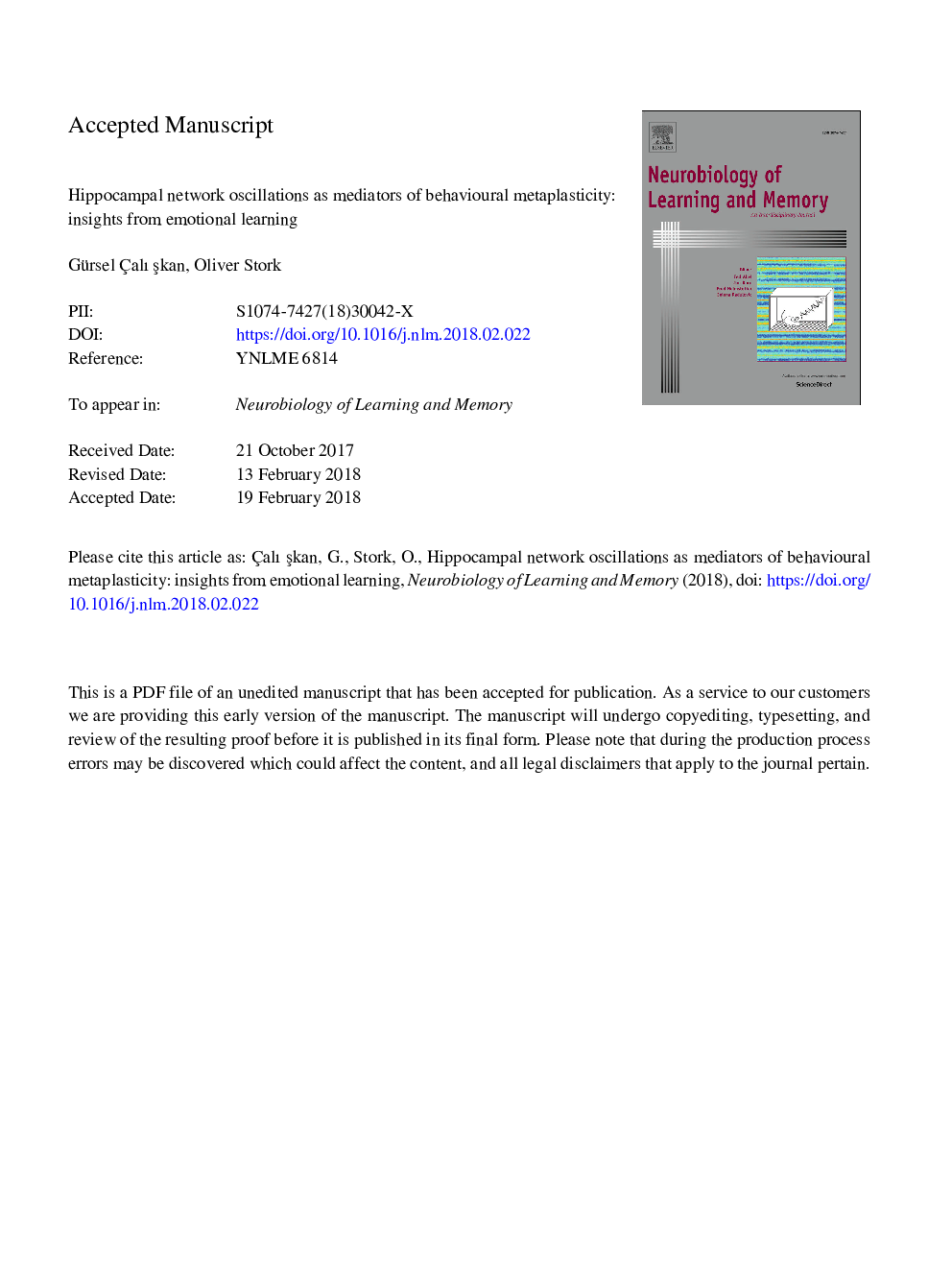| Article ID | Journal | Published Year | Pages | File Type |
|---|---|---|---|---|
| 10153619 | Neurobiology of Learning and Memory | 2018 | 52 Pages |
Abstract
Behavioural metaplasticity is evident in experience-dependent changes of network activity patterns in neuronal circuits that connect the hippocampus, amygdala and medial prefrontal cortex. These limbic regions are key structures of a brain-wide neural network that translates emotionally salient events into persistent and vivid memories. Communication in this network by-and-large depends on behavioural state-dependent rhythmic network activity patterns that are typically generated and/or relayed via the hippocampus. In fact, specific hippocampal network oscillations have been implicated to the acquisition, consolidation and retrieval, as well as the reconsolidation and extinction of emotional memories. The hippocampal circuits that contribute to these network activities, at the same time, are subject to both Hebbian and non-Hebbian forms of plasticity during memory formation. Further, it has become evident that adaptive changes in the hippocampus-dependent network activity patterns provide an important means of adjusting synaptic plasticity. We here summarise our current knowledge on how these processes in the hippocampus in interaction with amygdala and medial prefrontal cortex mediate the formation and persistence of emotional memories.
Keywords
Related Topics
Life Sciences
Neuroscience
Behavioral Neuroscience
Authors
Gürsel ÃalıÅkan, Oliver Stork,
